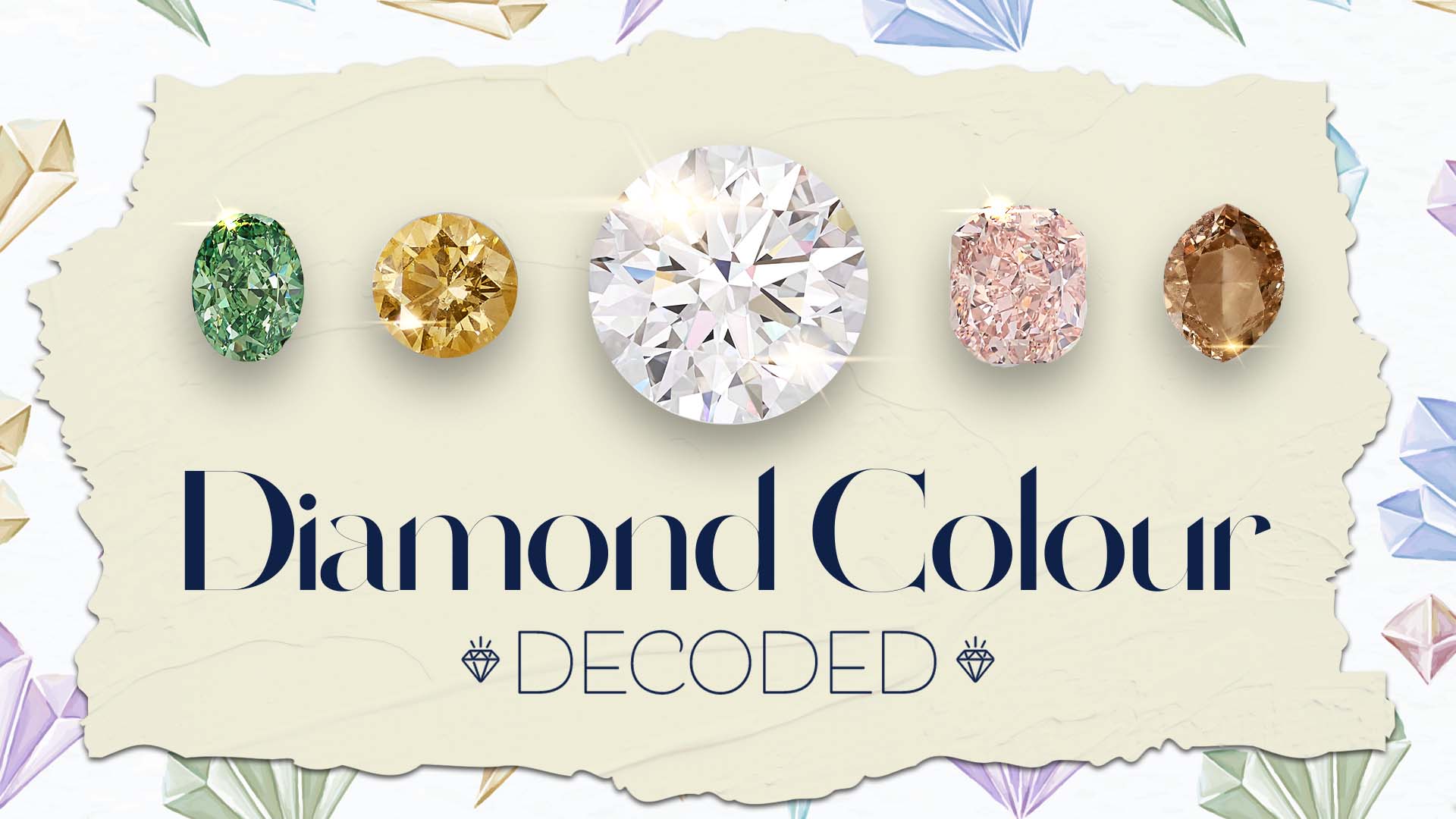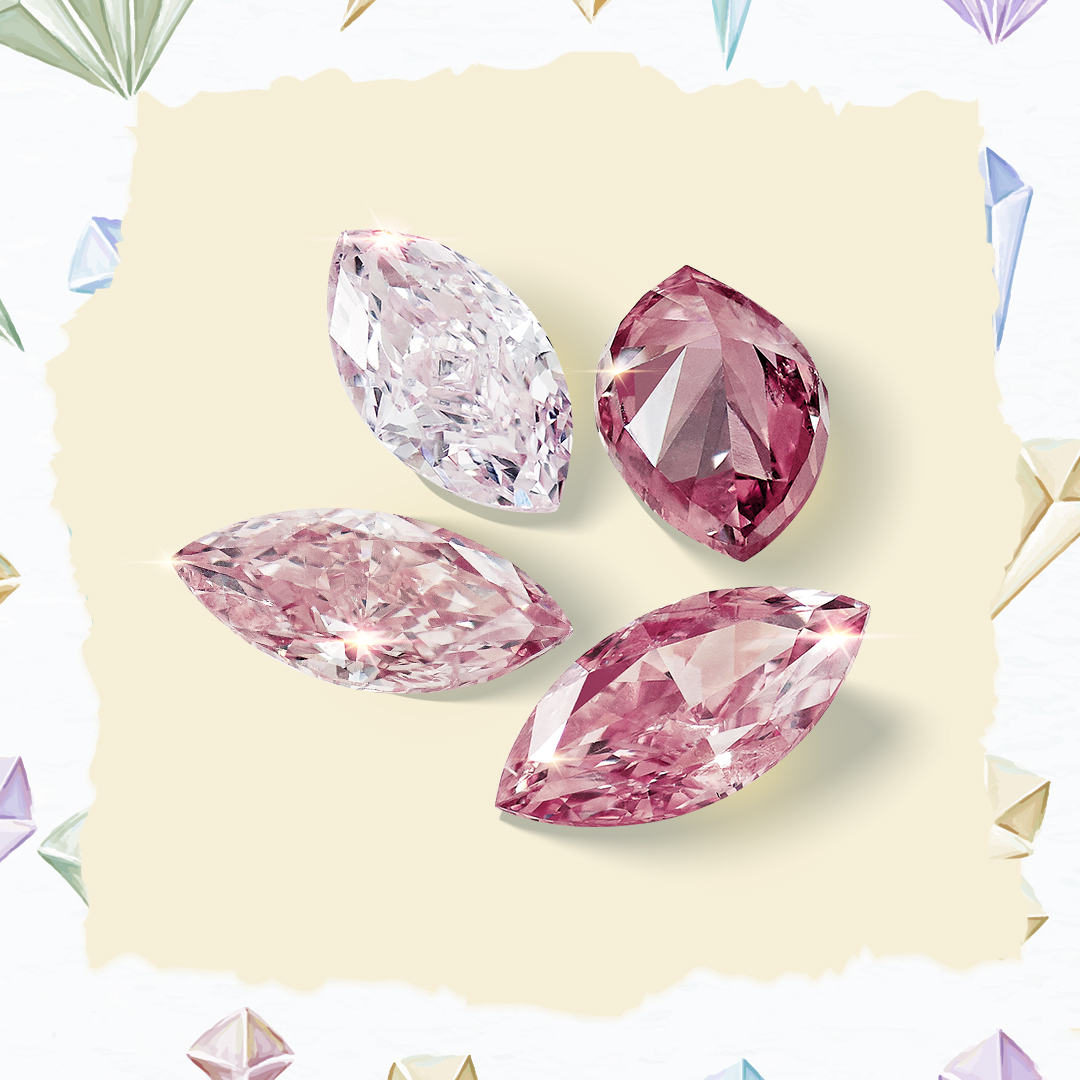Understanding the 4Cs – The Science behind Diamond Colour
The fascinating world of Colour in diamonds, and coloured diamonds – simplified for you.
All images courtesy: De Beers
|
When making a natural diamond purchase, you often come across the terms ‘colourless’ and ‘coloured’. If you’ve always wondered what they meant, you’re in for a read that will clarify your confusion. While the science behind a diamond’s colour can be tricky to understand at first, once you get it down, it leads you straight to the natural diamond that’s inexplicably perfect for you.
To simplify this seemingly complex world of diamonds, we spoke to Jamie Clark, Head of Global Operations at the De Beers Institute of Diamonds to give us his insights into one of a diamond’s 4Cs: Colour and how it affects the rest-of-the-stone’s features.
What is diamond colour?
Diamond Colour, in opposition to what it may sound like, actually refers to the lack of colour in a diamond. In fact, the diamond colour evaluation of gem-quality diamonds is made based on the absence of colour. The diamond colour-grading system which ranges from D to Z measures the degree of colourlessness, where D corresponds to the purest colourless colour and Z to a yellow or brown tint. Thus, as you progress from D to Z on the scale, the colourlessness and the value of the diamond both decrease. Naturally coloured diamonds outside this normal colour range are called fancy-colour diamonds.
Why does the grade begin with the letter D?
Before the Gemological Institute of America (GIA) introduced diamond grading in the 1950s, there was no grading standard terminology for describing a diamond’s colour and clarity. Designations of A, AA, and AAA as well as numbers were previously not uncommon. To distance themselves from these haphazard colours the GIA decided to start their top Colour Grade with D and descend through the alphabet with a diamond’s increasing yellow saturation through to Z. As a diamond’s hue saturation increases beyond Z colour, it can be considered a fancy colour.
What causes colour in a diamond? Which element is responsible for it?
Colour is a combination of Hue, Saturation and Tone. Simply put colour, the amount of it, and relative darkness. The International Commission on Illumination (C.I.E) in 1931 found that each of these components can be measured. If you can see it, you can measure it.
Diamonds come in all colours from colourless through to varying saturations of yellow, green, blue, red, pink, brown, orange, violet and more. Varying geological processes applied the whole rainbow to diamonds as they grew at depths of 150 to 600 kilometres in the Earth’s mantle over billions of years ago.
With all that activity going on deep in the Earth’s mantle, it’s no wonder that truly colourless diamonds are so rare. Only near perfect combinations of different elements or distortions occurring during a diamond’s billion year journey to the earth’s surface can produce a more rare fancy colour.
The most common colour in gem-quality diamonds is yellow, usually caused by the element Nitrogen incorporated in a diamond’s carbon atoms. Higher concentrations of Nitrogen produce more yellow saturation, and intense and vivid appearances. It is also common for other hues of brown, green and orange to have yellow as a modifying colour.
Colourless or white diamonds contain little to no Nitrogen, which can be responsible for up to 1% of a diamond’s mass. As diamonds with incorporated Nitrogen absorb blue light, we are left with its yellow hue.
Blue, violet, and grey diamonds incorporate the element Boron in their atomic structure to dramatic effect. Fancy blue diamonds which are typically modified with a greyish tone, are highly prized, with many of them being valued or recently sold for millions of dollars per carat.
A natural green colour in diamonds comes from the distortion of its atoms on being exposed to radioactivity in nature millions of years ago. Green diamonds themselves are not radioactive. Today serious scientific detection instruments and analysis are required to determine if indeed a green diamond’s colour is natural.
Red, pink and brown diamonds are a result of the twisting, plastic distortion of their atomic structures caused by the tremendous pressures and temperatures during their formation at depth. Light passing through these distorted crystals is filtered leaving their varying hues of red, pink and brown.

Rare Fancy Pink diamonds are amongst the most desirable of all diamonds. They are often accompanied by a modifying hue of purple, brown or orange, creating an impressive range of appearances.
The Pink Star, is the largest Fancy Vivid Pink at 59.60 carats. The 132.50 carat rough was discovered by De Beers in southern Africa in 1999. It took almost 2 years to plan and polish its oval-shape. In 2017 it was sold at auction for $71.2 million dollars.
Does the colour of a diamond have a direct relation to impurities / inclusions in it?
Not exactly. Some inclusions may have their own colour but these included crystals have no effect on the true body colour of their host diamonds.
What is the ideal / best diamond colour?
The ideal diamond colour is the one that you have chosen in combination with Clarity, Cut and Carat – the other 3Cs.
In the D to Z diamonds range – D colour diamonds are the rarest and most valuable. Among the fancy colour diamonds, red is considered the rarest, followed by blue, violet, pink and so forth.
What is the impact of Colour Grade on a diamond’s value?
The impact of colour on a diamond’s price is a function of its rarity.
For instance, the difference between D and E colour Internally Flawless 1 carat diamonds can be 25%. On 1 carat diamonds of SI2 Clarity the difference is closer to 5% as Clarity becomes dominant in price determination over Colour.
Why are diamonds colour graded face down?
Industry diamond buyers learned long ago that a diamond’s Cut and blue fluorescence can often have an influence on a diamond’s Colour Grade. A poorly cut diamond with a flat crown could appear whiter than an excellent proportioned diamond with a fuller crown with both having the same true body colour. Blue fluorescence can also make a yellowish diamond appear whiter in the presence of UV light when viewing face up.
Placing the diamond face down in a colour card and viewing the diamond through its pavilion proved the most accurate results and has since been industry wide practice.
How does the colour of a diamond impact its look once it’s set in jewellery?
Very little in fact. It would take a real professional to determine a D from an F in a ring for example. Jewellers will choose to set more colourless diamonds in white gold, platinum, or yellow gold to show off top colours. Conversely warmer, more yellow diamonds should not be set in white metals unless the contrast is desired.
What are the most affordable coloured diamonds?
The most affordable fancy colour diamonds are those which occur more in nature or those with lesser saturation. A Fancy Light Pink for example will be valued considerably less than a Fancy Vivid Pink. And a Fancy Brown diamond will be valued much less than either. Modifying hues may make certain hues more affordable, while still exhibiting attractive displays of colour. An example is adding a yellow modifier to an orange diamond. Value on all of these would depend upon their attractiveness face up, and their settings in jewels.
What is the rarest coloured diamond?
Fancy Red diamonds. They are so rare that only a handful have been discovered that can truly be graded as red without any colour modifiers, such as purple or brown. Their striking appearance and extreme rarity make Fancy Red the most highly valued of all fancy colour diamonds.
Conclusion
While the best colour or value of a diamond can never be assigned to a person, there surely is a ‘perfect diamond’ for every person. Knowing the basics of diamond colour can definitely help enhance your diamond buying process, and help you find the exact diamond you want set in your jewellery.
